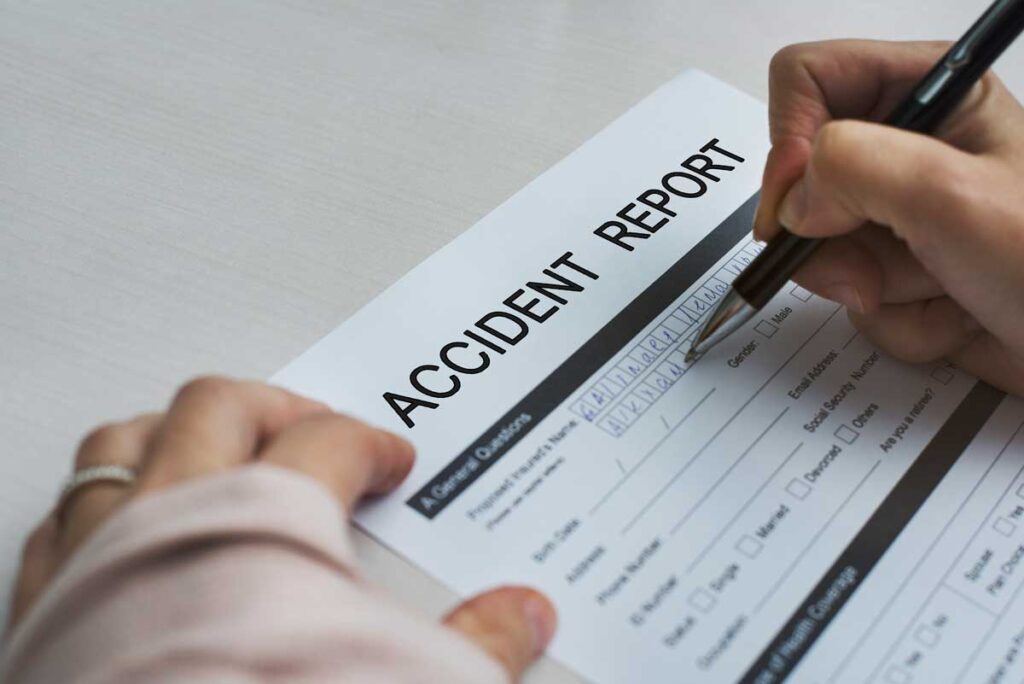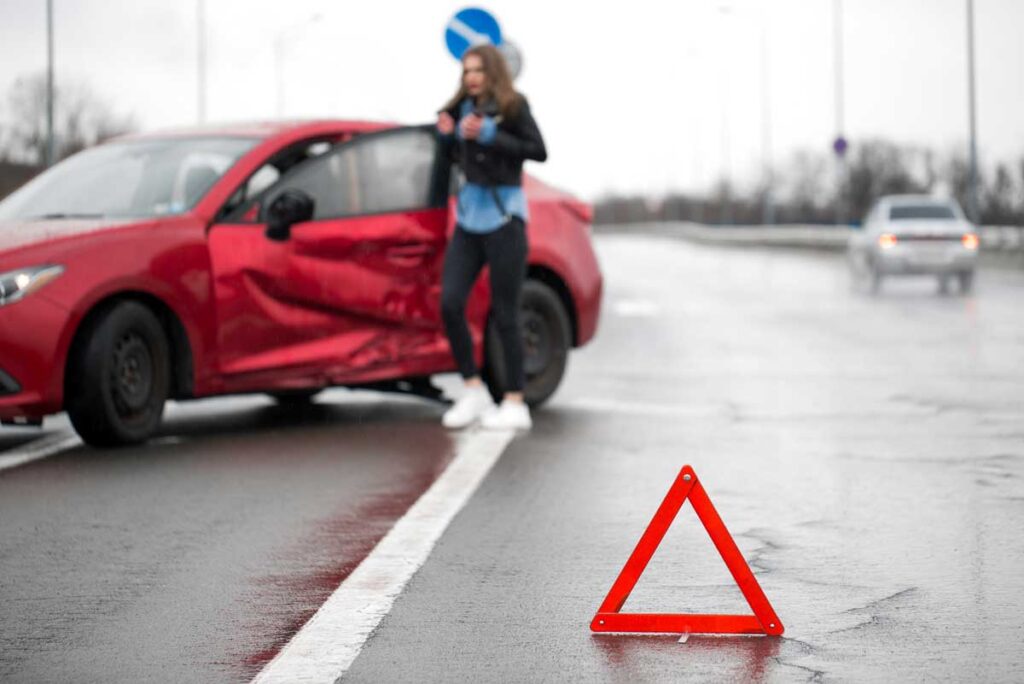Key Takeaways:
- Report any car accident Singapore to the police and your insurer as soon as possible.
- Collect all necessary information at the accident scene, including details about the parties involved, witness information, and evidence of the damage.
- Provide accurate and truthful information in your accident report and insurance claim.
- If you have any questions or concerns, don’t hesitate to seek guidance from your insurer or a motor accident lawyer Singapore.
Handling Car Accidents in Singapore with the Motor Claims Framework
What is the Motor Claims Framework (MCF) in Singapore?
The Motor Claims Framework (MCF) Singapore is a set of rules that helps make dealing with car accidents a bit easier. It’s a system created to make the whole process of reporting accidents and making insurance claims smoother and fairer for everyone involved. It is a set of procedures for reporting motor accidents in Singapore:- Common procedures – The MCF provides clear, common procedures for what to do in the event of a motor accident.
- Supported by all insurers – All motor insurers in Singapore support the MCF.
- Benefits – The MCF provides motorists with a better claims experience and helps contain claims costs for insurers. It also provides access to a larger pool of certified motor repair workshops and related services.

Here are some tips for making a motor claim in Singapore:
- Report within the timeframe – The MCF states that the end of the next working day is the timeframe for reporting.
- Take photographs – Take photographs of the accident scene, including the damaged vehicles, the surrounding area, and any property damage.
- Exchange details – Exchange details with other parties involved, including their names, NRICs, and contact numbers. If possible, also include the contact and IC details of witnesses.
- Don’t move the vehicle – Don’t move your vehicle before taking photographs of the accident scene.
- Don’t deal with unauthorized tow-truck operators – The MCF strongly advises motorists not to have any dealings with unauthorized tow-truck operators at the scene of the accident.
Definition and Objectives
The MCF is like a guidebook for drivers in Singapore who have been in accidents. It helps everyone understand what to do and how to handle things properly. It aims to:
- Simplify the claims process – The MCF makes it easier for drivers to understand how to report accidents and make claims, reducing confusion and stress.
- Promote transparency and fairness – The MCF ensures that everyone is treated fairly and that the process of settling accident claims is transparent and easy to understand.
- Reduce disputes and legal costs – By providing clear guidelines, the MCF helps to minimize disagreements and the need for expensive legal action.
- Improve efficiency – The MCF streamlines the claims process, making it faster and more efficient for everyone involved.
Key Features of the MCF
Here are some of the key things that make the MCF so helpful:
- Standardized procedures – The MCF provides clear and consistent steps for reporting accidents, so everyone knows what to do.
- Authorized workshops – The MCF encourages the use of authorized workshops for repairs, ensuring that your car is fixed properly and to a high standard.
- Independent assessors – It involves independent assessors to evaluate claims, ensuring that assessments are fair and unbiased.
- Clear guidelines – It provides clear guidelines for assessing who is at fault in an accident and how claims should be settled.
By understanding the MCF, you’ll be better equipped to handle a car accident in Singapore, ensuring a smoother claims process and a fairer outcome.
How to Report an Accident Under the MCF
Knowing the correct procedures after a car accident Singapore is essential for a smooth claims process. The Motor Claims Framework (MCF) provides clear guidelines to help you handle this situation.
Steps to Take After an Accident
Ensure Safety
- Check for injuries – Your priority is safety. Check yourself and any passengers for injuries. If anyone is hurt, call for an ambulance (dial 995).
- Move to safety – If possible and safe, move your vehicle to the side of the road to avoid obstructing traffic. Turn on your hazard lights.
- Warn others – If the accident is serious or there are injuries, use warning triangles or other signals to alert oncoming traffic.
Exchange Information
- Remain calm and polite – Avoid arguing or admitting fault.
- Exchange details – Get the following information from all parties involved:
- Full name
- Contact number
- NRIC/FIN number (if they are comfortable sharing)
- Address
- Vehicle registration number
- Insurance company and policy number
- Note witness details – If there are witnesses, get their contact information as their accounts can be valuable.
Document the Accident
- Take photos and videos – Use your phone or camera to document the accident scene from various angles. Capture the position of vehicles, damage, skid marks, road conditions, traffic signals, and any other relevant details.
- Preserve evidence – If possible and safe, try to preserve any physical evidence at the scene, such as debris or damaged parts.
Report to the Police (If Required)
- Mandatory reporting – In Singapore, you must report the accident to the police within 24 hours if:
- Someone is injured
- A government vehicle or property is damaged
- A foreign-registered vehicle is involved
- A pedestrian or cyclist is involved
- It’s a hit-and-run case
- How to report – You can file a police report online via the Singapore Police Force e-Services website or visit a police station in person.
Notify Your Insurer
- Prompt notification – Inform your insurance company about the accident as soon as possible, ideally within 24 hours or the next working day.
- Provide information – Give them the accident details, including the date, time, location, description of what happened, and information exchanged with other drivers.
- Clarify any doubts – Use this opportunity to clarify any questions you have about the claims process.
Filing an Accident Report
Where to file – You can file a car accident report Singapore online through the Singapore Police Force e-Services website or at an authorized workshop.
Information to include – Provide accurate and detailed information, including:
- Date, time, and location of the accident
- Description of the incident and how it happened
- Details of all parties involved (drivers, passengers, witnesses)
- Vehicle information (make, model, registration number, insurance details)
- Description of damage to vehicles and property
- Any injuries sustained
Remember:
- Be honest and accurate – Accurate information is crucial for a fair assessment of your claim.
- Don’t delay – Report the accident promptly to avoid complications.
- Keep records – Keep copies of all communication and documents related to the accident and your claim.
By following these steps and understanding the motor accident reporting Singapore procedures under the MCF, you can enable an easier and more efficient claims process.

Determining Liability in a Car Accident
After a car accident, one of the first questions that arises is: “Who’s at fault?” Determining liability, or who is responsible for the accident, is a key step in the car accident report Singapore process and affects how insurance claims are settled.
Who is at Fault?
Several factors contribute to determining fault in a car accident Singapore:
Traffic Rules
The most fundamental factor is whether any traffic rules were violated. This includes things like speeding, running red lights, failing to yield, making illegal turns, or driving under the influence of alcohol or drugs.
Road Conditions
Road conditions can also play a role. If an accident is caused by a hazardous road condition, such as a pothole or poorly maintained road surface, the responsible authority might be held liable.
Driver Actions
The actions of the drivers involved are critical in determining fault. This includes things like:
- Following distance – Did the driver maintain a safe following distance?
- Lane changes – Were lane changes executed safely and with proper signaling?
- Observation – Did the driver pay attention to their surroundings and anticipate potential hazards?
- Speed and control – Was the driver traveling at a safe speed and in control of their vehicle?
The Role of BOLA
In Singapore, the Barometer of Liability Agreement (BOLA) is often used as a guideline to assess liability in common accident scenarios. BOLA provides a framework for determining fault in typical situations, such as rear-end collisions, lane change accidents, and accidents at junctions. It assigns a percentage of liability to each driver based on the circumstances of the accident.
However, it’s important to remember that BOLA is a guideline, not a legally binding rule. In complex or disputed cases, other evidence might be considered to determine fault.
Evidence and Investigation
To determine fault accurately, insurance companies and authorities may conduct investigations and gather evidence, including:
- Witness Statements – Statements from witnesses who saw the accident can provide valuable information about what happened.
- Dashcam Footage – If any vehicles involved had dashcams, the footage can provide crucial evidence of the accident and the actions of the drivers.
- Police Reports – The police report contains details about the accident, including statements from the drivers and any citations issued.
- Vehicle Damage – The extent and location of damage to the vehicles can help determine the point of impact and the sequence of events.
- Independent Assessors – Insurance companies often appoint independent assessors to evaluate the damage to vehicles and provide an unbiased assessment of the accident.
- Loss Adjusters – In more complex cases, loss adjusters might be involved to investigate the circumstances of the accident and determine liability.
By carefully considering all available evidence and applying the relevant guidelines, insurance companies and authorities can determine fault in a car accident and ensure a fair settlement for all parties involved.
The Motor Insurance Claim Process in Singapore
If you’re involved in a car accident in Singapore, understanding the motor insurance claim process can help you handle the situation with greater confidence and make sure you receive a fair settlement.
Filing a Claim
The first step is to file a claim with your insurance company. You can usually do this online, over the phone, or through your insurance agent. It’s important to report the accident to your insurer as soon as possible, ideally within 24 hours or the next working day.
When filing a motor insurance claim Singapore, you’ll typically need to provide the following documents:
- Accident Report – This is the report you filed with the police or at an authorized workshop, providing details about the accident.
- Insurance Policy Details – Your insurance policy documents, including your policy number and coverage details.
- Vehicle Registration Documents – Proof of ownership of your vehicle, such as the vehicle registration certificate.
- Driving License – A copy of your driving license.
- Medical Reports and Bills (if applicable) – If you or anyone else was injured in the accident, you’ll need to provide medical reports and bills to support your claim for medical expenses.
- Repair Estimates or Invoices – If your vehicle was damaged, you’ll need to provide repair estimates or invoices from an authorized workshop.

Common Mistakes to Avoid in Accident Reporting
Even with the Motor Claims Framework (MCF) Singapore in place to simplify the process, it’s still possible to make mistakes when reporting a car accident. These mistakes can potentially delay your claim, reduce your settlement amount, or even lead to legal complications. Here are some common pitfalls to avoid:
Delaying the Report
Reporting the accident promptly to your insurer is crucial. Most insurance policies have a time limit for reporting accidents, usually within 24 hours or the next working day. Delaying the report can have several consequences:
- Affecting your No-Claim Discount (NCD) – Your insurer might reduce your NCD, even if you weren’t at fault, if you fail to report the accident promptly. This can result in higher premiums in the future.
- Jeopardizing your claim – Delaying the report can give the insurer reason to question the validity of your claim or even deny it altogether.
- Creating doubt – A delayed report might raise doubts about the accuracy of your account of the accident or suggest that you’re trying to hide something.
Providing Inaccurate Information
Always provide accurate and truthful information in your accident report. This includes details about the accident, the parties involved, and any damage or injuries sustained. Inaccuracies can have serious consequences:
- Delaying your claim – The insurer might need to investigate further if there are inconsistencies in your report, leading to delays in processing your claim.
- Reducing your settlement – If the insurer discovers inaccuracies, they might reduce your settlement amount or even deny your claim altogether.
- Legal implications – Providing false information in an accident report can have legal implications, including fines or even prosecution for fraud.
Failing to Gather Sufficient Evidence
Gathering evidence at the accident scene is crucial for supporting your claim and determining liability. Failing to gather sufficient evidence can weaken your case:
- Difficulty in proving fault – Without adequate evidence, it might be difficult to prove who was at fault in the accident, especially if there are conflicting accounts from the parties involved.
- Reduced settlement – If you can’t provide sufficient evidence to support your claim for damages or injuries, the insurer might offer a lower settlement amount.
- Lost opportunity – Evidence that is not collected at the scene might be lost or become unavailable later, weakening your case.
Not Seeking Legal Advice
If you have any questions or concerns about liability, compensation, or the claims process, it’s always a good idea to consult with a motor accident lawyer Singapore. A lawyer can provide expert advice and guidance, protect your rights, and help you navigate the legal complexities of the situation.
Here are some situations where seeking legal advice is particularly beneficial:
- Serious injuries – If you or someone else sustained serious injuries in the accident, a lawyer can help you pursue a personal injury claim and make sure you receive fair compensation.
- Disputes – If there’s a dispute about liability or if the insurance company is not offering a fair settlement, a lawyer can negotiate on your behalf and, if necessary, represent you in court.
- Uninsured or hit-and-run drivers – If you’re involved in an accident with an uninsured or unidentified driver, a lawyer can help you handle the claims process with the Motor Insurers’ Bureau (MIB) and secure the compensation you’re entitled to.
By avoiding these common mistakes and taking proactive steps to protect your interests, you can ensure a smoother and fairer claims process under the Motor Claims Framework (MCF) Singapore.
Understanding the MCF for a Smoother Claims Process
The Motor Claims Framework (MCF) Singapore is a valuable resource for all drivers in Singapore. It provides a clear and standardized system for handling motor accident reporting and claims, promoting transparency and efficiency in the process. By understanding the MCF guidelines and following the proper procedures, you can ensure a smoother and fairer claims experience, minimizing stress and potential delays.
Need Help with Your Accident Claim?
SG Accident is committed to supporting drivers in Singapore through the accident reporting and claims process. As your trusted traffic accident claim partner in Singapore, we’ve assisted countless drivers in understanding the MCF, helping them know their rights and responsibilities, and supporting them in achieving fair and efficient claims resolution.
Contact us today for expert guidance and assistance with your accident report and insurance claim.



